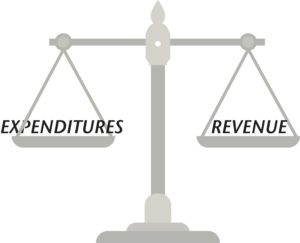WASHINGTON, DC – Today the Trump Administration released its first ten year budget proposal, and the numbers are devastating for people with intellectual and developmental disabilities (IDD) and their families. On top of the more than $800 billion in Medicaid cuts already approved by the House of Representatives, the Trump Administration is planning for $610 billion in cuts to Medicaid; $72.4 billion in cuts to Social Security’s disability programs; and hundreds of billions more in cuts to other effective federal programs that are vital to people with IDD.
“Where we invest our federal dollars is a measure of our values as a nation. Today the Trump Administration showed its cards, and coupled with the devastating Medicaid cuts already approved by the House of Representatives in the health care bill, the deck is stacked against people with disabilities.
“In the last few weeks, I’ve traveled to chapters of The Arc in Maryland, North Carolina, Wisconsin, and even Alaska. Chapters of The Arc sprang up in these communities and across the country decades ago because people with disabilities and their families were appalled by the segregation of people with disabilities in inhumane institutions, and they were determined to make progress. And we have fought for rights, closed institutions, opened up the community and classroom, and paved the way to employment. Two effective programs built on bipartisan policy over the years – Medicaid and Social Security – have been essential to this progress. Medicaid provides health care and long term supports that help make a life in the community possible for many people with disabilities, and Social Security is far too often the only thing keeping the lights on and food on the table for a person with a disability.
“That these proposed cuts come in the very same package that is proposing the largest tax cuts in our nation’s history is simply obscene. Giving $5 trillion in tax cuts that primarily benefit wealthy individuals and corporations while simultaneously threatening the lives of everyday people defies comprehension.
“This budget – this Trump card – along with the health care cards being played in Congress as we speak, will dismantle decades of progress for people with disabilities and their families. So I’m calling on all advocates to do what they have done for decades, band together to put a face on these cuts. Share your story in your community and with your elected officials, and tell them to reject these cuts, before we go back in time to an era of discrimination and isolation,” said Peter Berns, CEO, The Arc.
In tandem with this budget news, The Arc is releasing a video which shares the story of a Maryland family which risks losing access to critical care for one of their children due to impending cuts to federal Medicaid funding. The video features Soojung, whose 11-year old daughter Alice, has Rett Syndrome and relies on overnight nursing services to be able to live at home with her family. Soojung speaks about the challenges she and her husband faced accessing these services, including having their requests turned down by private insurers. After years of waiting and uncertainty, Alice was finally accepted to a Medicaid program that provides her with nightly nursing services. These services have led to a great improvement in Alice’s health, making 2016 the first year of her life without a hospital stay.
For many families like Soojung’s, their health and lives could dramatically worsen if the Trump Administration’s proposed Medicaid cuts became a reality or if the over $800 billion in cuts over 10 years to federal Medicaid funding, proposed in the House-approved American Health Care Act (AHCA), go into effect. These cuts would not only force states to cut eligibility for their Medicaid programs, but would also diminish the quality and quantity of services that are provided to people who are already enrolled in these programs.
This video is the fifth in a series of videos The Arc is releasing, sharing the personal stories of people with disabilities and their families, and the impact of the Affordable Care Act (ACA) and Medicaid on their lives.
The Arc advocates for and serves people with intellectual and developmental disabilities (IDD), including Down syndrome, autism, Fetal Alcohol Spectrum Disorders, cerebral palsy and other diagnoses. The Arc has a network of over 650 chapters across the country promoting and protecting the human rights of people with IDD and actively supporting their full inclusion and participation in the community throughout their lifetimes and without regard to diagnosis.


 A balanced budget amendment is a proposed federal constitutional rule requiring that the government not spend more than its income in a given year. Most state constitutions have balanced-budget provisions and most of these make an exception for times of war or national emergency, or allow the legislature to suspend the rule by a supermajority vote. The U.S. Constitution does not require a balanced budget. Some members of Congress are looking to change that by passing legislation to add an amendment to the U.S. Constitution.
A balanced budget amendment is a proposed federal constitutional rule requiring that the government not spend more than its income in a given year. Most state constitutions have balanced-budget provisions and most of these make an exception for times of war or national emergency, or allow the legislature to suspend the rule by a supermajority vote. The U.S. Constitution does not require a balanced budget. Some members of Congress are looking to change that by passing legislation to add an amendment to the U.S. Constitution.





